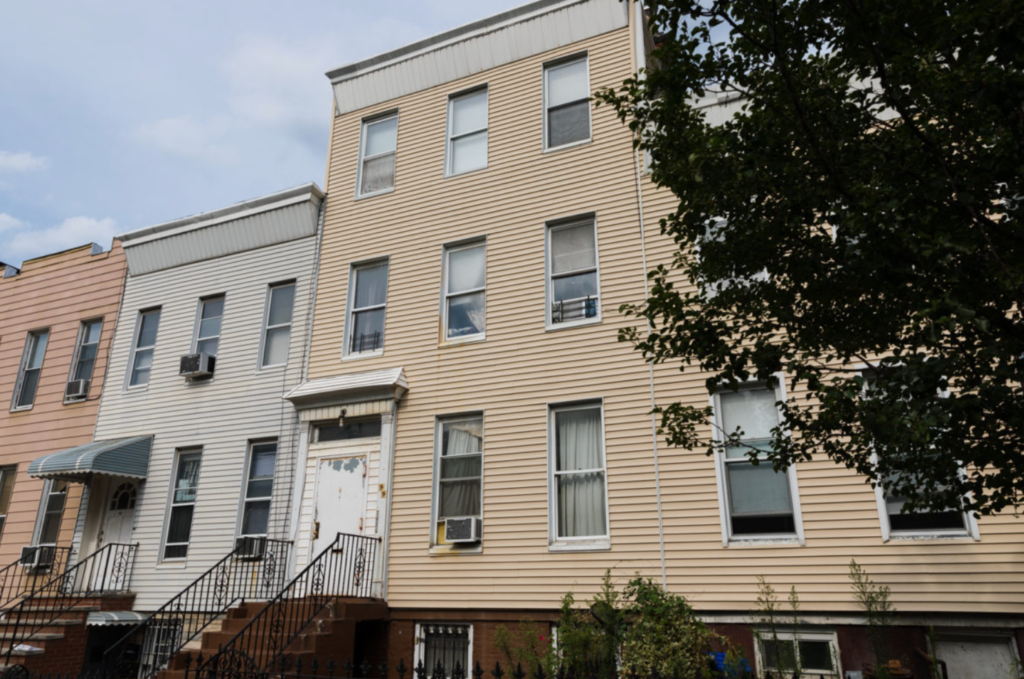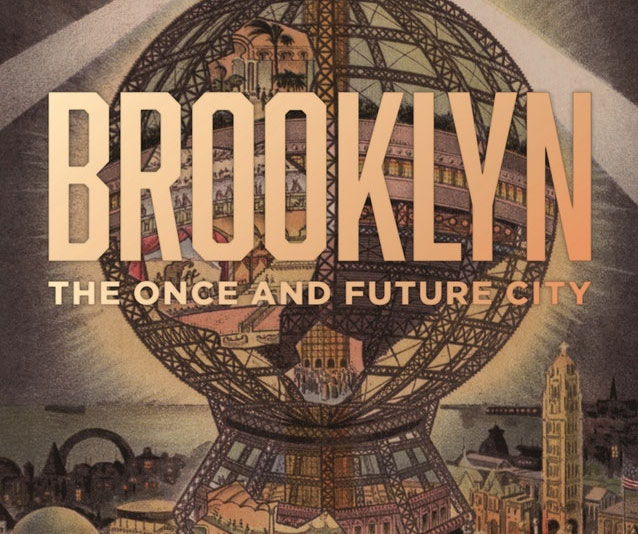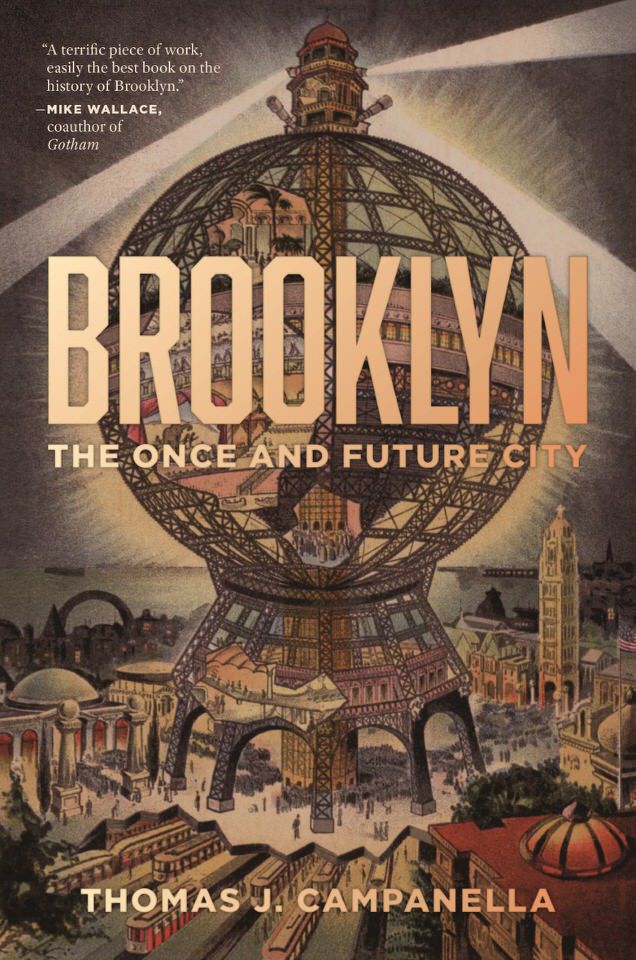Lauren from Brooklyn Heights asks: What writers lived in Brooklyn Heights?
Great literary writing started in Brooklyn Heights, Lauren, but it has spread over the borough, attracting literary notables. Conversely, most of the Brooklyn celebrities began elsewhere. Brooklyn bestowed literary prominence upon them.
Brooklyn Heights has been a writers’ paradise since the days of Walt Whitman in the 1840s. “He drew energy from Brooklyn,” reported Evan Hughes in “Literary Brooklyn.” Whitman worked at Rome Brothers, a print shop on Cranberry and Fulton streets where, in his off hours, he set type for a long, wild poem that would become “Leaves of Grass.” His daytime job as editor at 26 of the Brooklyn Daily Eagle lasted until he was fired for criticizing the publisher’s politics. Walt, an elementary school dropout, struggled to support his family. They led a peripatetic life moving in the Heights from Front Street to Henry to Adams to Tillary.
In subsequent years, other writers followed Whitman’s pattern in Brooklyn Heights, often moving close to their peers. This literary history was recounted by John Gardiner in the Brooklyn Heights Press in 1983 in a review of the book, “Literary New York,” by Susan Edmiston and Linda Cirino. Gardiner wrote about anecdotal encounters with famous celebrities: Thomas Wolfe, Arthur Miller, Norman Mailer and Norman Rosten. These literary giants of yesteryear created an aura that prevailed in Brooklyn from the 1920s to this day.
Let’s start with the biggest writer, Thomas Wolfe, over 6 feet 6 inches tall and completely undisciplined. He wrote about the dead in Brooklyn capturing the local idiom although he hailed from Asheville, North Carolina. Moving north to 40 Verandah Place in Cobble Hill, he completed his semi-autobiography, “Look Homeward, Angel,” in 1929. The tome critiques his childhood and disparages family, friends and neighbors.
His move to Brooklyn in the beginning of the Depression affected him. As Whitman did before him, he recognized the grandeur of America in the midst of hopelessness and misery in Brooklyn. Wolfe considered Brooklyn “a fine town … a long way from New York.” In November 1931, Wolfe moved into 111 Columbia Heights, but his mismanagement of finances forced him to move again to a smaller apartment at 101 Columbia Heights. Another move in 1933 placed him in a four-story walk-up at 5 Montague Terrace where a plaque today identifies the residence where he worked on “Of Time and the River.”
The Brooklyn Heights Press recorded an anecdote of a neighbor at that address who attached himself to Wolfe until the writer discarded him as he had done with acquaintances in his books. In spite of such annoyances, Wolfe wrote that he had “seen stuff out here in great unchartered places that nobody in New York ever heard of.” With publication of “Of Time and the River” in 1935, the New York Herald-Tribune published a verbal portrait of Wolfe that invaded his privacy. “It’s time to go,” he announced. His publisher toasted his success and departure with a July 4 farewell on the roof of the Hotel St. George.
Among other famous Heights names are the Millers (no relation).
Infamous Henry Miller lived in an apartment at 91 Remsen St. in the 1920s revering Whitman and his unorthodoxy. While there with his second wife, June, he worked at Western Union telegraph while his wife was a dance hall “hostess.” In “Plexus” he described Remsen Street as “the most sedate, aristocratic section in all Brooklyn.” Yet, it was devolving into a neighborhood with “invading swarms of foreigners, derelicts and bums.” The poorly rated film, “Henry and June,” portrays this aspect of their life. After June started a relationship with a woman named Jean, they moved to a cheaper apartment on Henry Street near Love Lane. George Orwell described Miller as “a sort of Whitman among the corpses.”
Arthur Miller lived around several corners years later. An émigré from Manhattan, his family moved to Midwood. From his Brooklyn experience, Miller created “Death of a Salesman” which echoed Bedford Avenue, and then a screenplay titled “The Hook” set in Red Hook. By 1955, “A View from the Bridge” opened on the stage. Moving to Brooklyn Heights, he lived at 62 Montague Street with his first wife and then at 102 Pierrepont Street where he casually met a neighbor, Norman Mailer, who lived in the same building with his mother. Settling down, Miller bought a house at 31 Grace Court which he sold to octogenarian W.E.B. DuBois in 1951. Later he lived at 155 Willow Street, built in 1829, where he wrote “The Crucible” in 1953. By 1956, he had moved to Connecticut and married Marilyn Monroe.
Hart Crane, whose fame peaked in the 1930s, admired and virtually worshipped the Brooklyn Bridge from his window at 110 Columbia Heights. The year was 1927. It was the same apartment from which Washington Roebling recuperated from the bends and overlooked construction of the bridge. Below Crane lived John Dos Passos who was beginning his work on “Manhattan Transfer.” In letters home, Crane described the Brooklyn Bridge as “the most superb piece of construction in the modern world.” Moving away temporarily, Crane returned to 77 Willow Street, across from where Truman Capote would later live.
When Crane later moved into 130 Columbia Heights, he met a young man — Walker Evans — who lived in the same building and who had bought his first camera. By 1929, Crane finished “The Bridge”; Evans’ photo adorns the cover of the Paris edition. To complete his masterpiece, Crane shifted to the basement of 190 Columbia Heights for solitude. Opening with the section “To Brooklyn Bridge,” the poem unfolds in a series of verbal vignettes describing Brooklyn Bridge from many angles evolving into a paean for/of American history.
Norman Mailer’s family moved from New Jersey to Flatbush and then to Eastern Parkway in Crown Heights while he studied for an engineering degree at Harvard. With the outbreak of World War II, he moved back to his parents’ Pierrepont Street apartment while renting studio space near Fulton Ferry Landing to write a novel, “A Transit to Narcissus.” Then he enlisted in the army gathering material for “The Naked and the Dead,” while in the Pacific. Married after his discharge, the couple moved to 49 Remsen Street where he wrote “Barbary Shore,” a 1951 book set primarily in Brooklyn. In the short novel, the locale is comparable to his workplace. Needing solitude to complete “The Naked and the Dead,” he sublet an attic room from a new friend, Norman Rosten, at 20 Remsen St., where it meets Montague Terrace.
In 1962, Mailer and his mother bought 142 Columbia Heights, a brownstone which he later renovated into five apartments; he moved into the upper rooms with his third wife. The room on the top floor, he converted into an office. Using the apartment for huge social events, it also operated as the kickoff for his bid to run for mayor of New York City in 1969 with columnist Jimmy Breslin as his running mate. His direction altered, he now wrote about prize fighting and political protest in his new aerie with “Armies of the Night,” “The Fight,” and “The Executioner’s Song.”
Alfred Kazin, a native Brooklynite from Brownsville, emerged as a famous literary critic, author of “A Walker in the City,” and student of Automats and pool halls. After meeting Richard Hofstadter at 134 Montague Street, Brooklyn Heights impressed him enough to rent an apartment at 150 Remsen Street where he completed “On Native Ground.”
The most famous former Heights address emerged on the cusp of World War II in 7 Middagh Street. The “February House—christened by Anais Nin because many of the residents were born in that month, harbored an unlikely rotating group of residents. A former boarding house located on the northeastern edge of the Columbia Heights, intrigued George Davis, a magazine editor. It was an old three-story house hanging above notorious brothels and rowdy bars of Sands Street at Vinegar Hill. In 1940, Davis decided it would serve as headquarters for a writers-and-artists’ colony.
He recruited Carson McCullers who had just published “The Heart Is a Lonely Hunter.” Next, he pursued Wystan Auden, a British poet who lived at 1 Montague Terrace. W.H. Auden, famous and successful, wanted to move to cheaper housing because wartime restrictions in Great Britain interrupted his cash flow. Next, Davis invited Benjamin Britten, composer, and his boyfriend, Peter Pears, a tenor, followed by a visit from three of author Thomas Mann’s children, one of whom stayed.
The strangest member was Gypsy Rose Lee, born Rose Louise Hovick, before her career as a striptease artist with successful star billing at the 1939 New York World’s Fair. An intellect, she joined the group to work on a mystery novel, “The G-String Murder,” later a successful novel and film. While there, she and McCullers hit it off. McCullers, inspired by her new home, wrote an essay “Brooklyn Is My Neighborhood” for Vogue magazine in 1941, in which she compared Brooklyn to Manhattan; “a treehouse with a Manhattan view,” is how Hughes phrases it. Inspiration struck McCullers while in Brooklyn Heights; ideas for both “The Member of the Wedding” and “The Ballad of the Sad Café” germinated during her days there.
In 1942, Richard Wright—who had emigrated from Mississippi to Chicago to Harlem to Fort Greene—moved in with his wife. He had started “Native Son” on the lawn of Fort Greene Park and moved from Crown Heights to Middagh Street saying, “I’m staying in Brooklyn for good now…,” according to his biographer. He finished “Black Boy” in Clinton Hill.
Guests arrived and departed, whether for dinner, conversation or overnight: Leonard Bernstein, Aaron Copland, Kurt Weill, and Lotte Lenya. In 1941, Salvador Dali visited. Paul Bowles, a composer and playwright, and his wife, Jane Bowles, checked in. Bowles had rented rooms at 2 Water Street and had a studio on Columbia Heights. He wrote “The Sheltering Sky” in 1949; she wrote “Two Serious Ladies” in 1943.
Others who dropped by included Christopher Isherwood, Janet Flanner (“Genet” in the New Yorker), Jerome Robbins, H.P. Lovecraft (who had written “The Horror at Red Hook” in 1927), and Virgil Thomson. Lincoln Kirstein contributed to the upkeep.
In 1945, the east side of Middagh Street disappeared and Number 7 with it to make room for the new Brooklyn-Queens Expressway that was being hung on Brooklyn Heights.
Meanwhile on Willow Street, literary art was not dead. That same year, Oliver Smith, fiction editor for Mademoiselle, accepted “Miriam” from a new writer from Alabama, Truman Capote. Then Smith bought a 28-room house at 70 Willow Street. Capote, who had moved from Park Avenue to the Pratt House in Clinton Hill, was offered the garden apartment at 70 Willow. Capote considered Brooklyn an uninviting community but Brooklyn Heights an oasis, the only place to live in New York. His “Breakfast at Tiffany’s” had scored and now he wrote an essay published as “Brooklyn Heights: A Personal Memoir” for Holiday magazine: “I live in Brooklyn. By choice.” It has been re-printed as “A House on the Heights.” By 1959, he had researched a newspaper article about a family murder which inspired “In Cold Blood.”
Norman Rosten, Brooklyn’s official borough poet laureate, lived at 20 Remsen Street and often lunched along Montague Street. At a party held at 84 Remsen, he was invited to meet Arthur Miller with his new girlfriend, Marilyn Monroe. Rosten’s 1968 coming-of-age novel is “Under the Boardwalk.”
An earlier Heights resident, Ernest Poole, lived above the vibrant waterfront and wrote about it in his novel, “The Harbor,” in 1915. Others wrote about Brooklyn Heights while living elsewhere. Paul Auster has scenes set in the neighborhood. “The Heights” by Paul Hedges takes place in the Heights, naturally. “Brookland” by Emily Barton is set in British-occupied Brooklyn Heights after the American Revolution’s Battle of Brooklyn. Sherill Tippins detailed life in “February House” in her definitive book.
And many writers lived in Brooklyn, just not Brooklyn Heights: Pete Hamill, Jonathan Lethem, William Styron, Marianne Moore, Hubert Selby Jr., Paula Fox, Colm Toibin, Daniel Fuchs, Betty Smith, Bernard Malamud, Isaac Bashevis Singer, Jennifer Egan, Edwidge Danticat, and Paule Marshall to pick a few. And many write about Brooklyn. The annual Brooklyn Book Festival introduces new talent every fall on the streets and mall of Downtown Brooklyn.
Once upon a time Scott Fitzgerald visited both the Hotel St. George and The Bossert; Ernest Hemingway was seen at the St. George. Other writers have certainly passed through or slept in an Airbnb but at this point I’m not aware of them.



